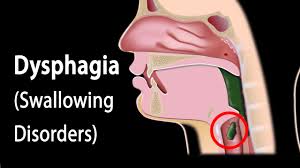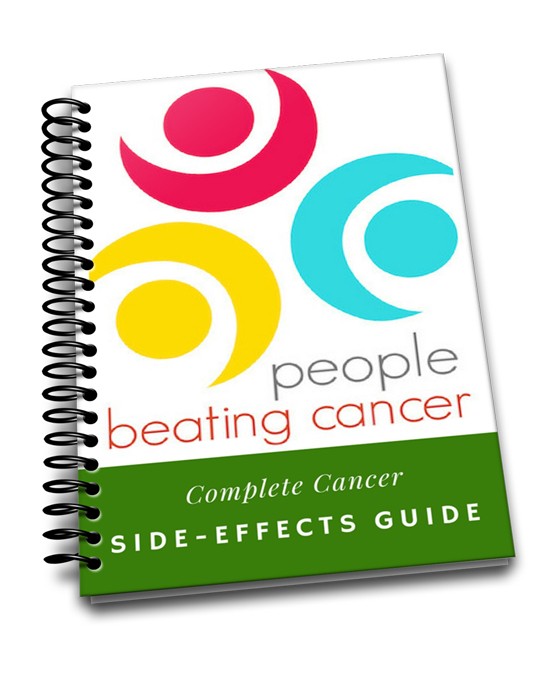Dysphagia increased by 11.7% over the 10‐year period. Prevalence was highest after chemoradiation and multimodality therapy.
I am not a H & N cancer survivor. I am a survivor of a blood cancer called multiple myeloma. I had radiation to my neck after a lesion was removed from my C5 vertebra. My point is that dsyphagia is a common long-term health problem for many reasons.
If you have had radiation or surgery to your neck for any reason and you notice yourself choking or foods getting stuck more often in your throat, you may be experiencing early dysphagia. You still have time to begin an exercise regimen that can prevent you from developing serious swallowing problems.

I learned about dysphagia and possible physical therapy for it from a friend who’s father also was diagnosed with dysphagia and chose to have a feeding tube surgically implanted in his neck rather than undergo the physical therapy that may have stregthened his swallowing muscles.
I have seen the long-term effects of dysphagia slowly rob a person of his ability to eat/swallow and I am going to make sure that the same fate does not happen to me.
If you have undergone local radiation to your neck and you think you may be losing your ability to swallow, please read the studies linked and excerpted below. I know little about endoscopic dilatation. Therefore I encourage you to ask your oncologist about this therapy.
My solution for my dysphagia is head sit-ups. The formal therapy is called the shaker exercise. I do the exercise demonstrated in the video linked below. I also do a variety of neck exercises- I mean, while I’m on the floor doing neck exercises, I might as well mix it up.
Click now to watch a short YouTube video of the shaker exercise-
Ed. Note 6/2021- The local radiation therapy to the C5 area of my neck occurred in early 1994. I began noticing difficulty swallowing food over the next few years. By the launch of PeopleBeatingCancer.org, I had researched dysphagia and the neck exercises that have maintained my ability to swallow up from 1994-2021. As of 2021, I occasionally have difficulty speaking, I can no longer sing and I make sure I always have liquids at the ready in case I choke on food.
Do you think you may have early dysphagia? Scroll down the page, post a question or comment and I will reply to you ASAP.
Thank you.
David Emerson
- MM Survivor
- MM Cancer Coach
- Director PeopleBeatingCancer
Recommended Reading:
“Dysphagia is the medical term for the symptom of difficulty in swallowing.[1][2] Although classified under “symptoms and signs” in ICD-10,[3] the term is sometimes used as a condition in its own right.[4][5][6] People with dysphagia are sometimes unaware of having it…[7][8]
The most common symptom of esophageal dysphagia is the inability to swallow solid food, which the patient will describe as ‘becoming stuck’ or ‘held up’ before it either passes into the stomach or is regurgitated. Pain on swallowing or odynophagia is a distinctive symptom that can be highly indicative of carcinoma, although it also has numerous other causes that are not related to cancer…
Background-The aim of the study was to examine prevalence of dysphagia at the population level in head and neck cancer (HNC) survivors.
Results-Prevalence of dysphagia, stricture, pneumonia, and aspiration pneumonia was
- 45.3%:,
- 10.2%,
- 26.3%, and
- 8.6%, respectively.
Dysphagia increased by 11.7% over the 10‐year period. Prevalence was highest after chemoradiation and multimodality therapy.
Conclusion-Comparing to published rates using similar methodology the preceding decade (1992‐1999), prevalence of dysphagia based on claims data was similar in 2002‐2011 in this study. These results suggest persistence of dysphagia as a highly prevalent morbidity, even in the decade in which highly conformal radiotherapy and minimally invasive surgeries were popularized.”
How Esophageal Dilation Helps Difficulty Swallowing
“Long-term pharyngeal dysphagia is a common complication following head and neck cancer (HNC) therapies. High-level evidence for pharyngoesophageal junction (POJ) dilatation as a treatment in this population is lacking.
We aimed to evaluate the safety and efficacy of POJ dilatation in dysphagic HNC survivors. This single-center, single-blind, placebo-controlled trial (St George Hospital, Sydney, Australia) randomly assigned (1:1) HNC survivors with long-term dysphagia (≥12 months postcompleted HNC therapies) to receive either graded endoscopic dilatations or sham dilatation (placebo). Patients were blinded to intervention types.
Two strata were used for permuted randomization: (1) HNC therapies (total laryngectomy vs. chemoradiation alone); (2) Prior POJ dilatation (nil vs. previous dilatation). The primary endpoint was a short-term clinical response in swallowing function (3 months), defined as (1) a decrease in Sydney Swallow Questionnaire score by ≥200 or a score ≤ ULN; and (2) satisfactory global clinical assessment…
The short-term response rate in the endoscopic dilatation group was 76% (n = 16), compared with 5% (n = 1) in the placebo group (P < 0.001). There were no serious adverse events. The finding of a mucosal tear postdilatation was associated strongly with clinical response (OR 13.4, 95% CI [2.4, 74.9], P = 0.003). Kaplan-Meier estimate of dysphagia relapse is 50% by 9.6 months (95% CI [6.0, 19.2]) from completion of dilatation. Endoscopic dilatation of the POJ is a safe and efficacious therapy for the treatment of long-term dysphagia in HNC survivors. Close follow-up and repeat dilatation are necessary given the high dysphagia relapse rate.
“Results- Median assessment time was 7 months post-RT (range: 5–34 months). Mean dose to the contralateral parotid gland and supraglottic larynx as well as maximum dose to the contralateral anterior digastric muscle predicted patient-reported dysphagia (AUC = 0.64–0.67). Mean dose to the pharyngeal constrictor muscle, the larynx, the supraglottic larynx and the epiglottis, as well as maximum dose to the contralateral submandibular gland predicted moderate and severe dysphagia by VFS (AUC = 0.71–0.80).
Conclusion-The patients in this cohort were consecutively identified pre-treatment, and were structurally approached and assessed for dysphagia after treatment at a specific time point. In addition to established dysphagia organs-at-risk (OARs), our data suggest that epiglottic and submandibular gland doses are important for swallowing function post-RT. Keeping DVH thresholds below V60 = 60% and V60 = 17%, respectively, may increase chances to reduce occurrence of severe late dysphagia. The results need to be externally validated in future studies…”




